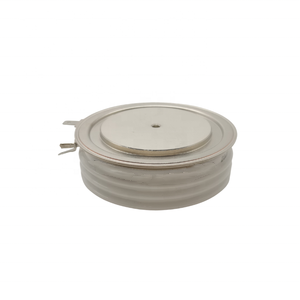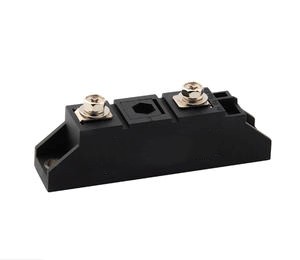Thyristors Online | High-Quality Power Semiconductors
Triac vs. Thyristor: What’s the Real Difference?
(Is Triac A Thyristor)
Ever peeked inside an electronic device? You find lots of tiny parts. Some control power. Two important ones are thyristors and triacs. People often ask: “Is a triac a thyristor?” The answer is yes, but also no. It sounds confusing. Let’s clear this up. We’ll explore what they are, how they work, and where you find them. Get ready to understand these power-switching champs.
Main Keyword: Triac Thyristor
1. What Exactly are Thyristors and Triacs?
Think of a thyristor as a special kind of electronic switch. It’s different from your light switch. A thyristor can handle very high power. It controls the flow of electricity. Once you turn it on, it stays on. It keeps conducting electricity. It only stops when the current drops to zero. This usually happens when the AC power cycle reverses. Thyristors are also called SCRs. SCR stands for Silicon Controlled Rectifier. They control power in one direction only.
Now, what about a triac? The name “triac” comes from “triode for alternating current”. This gives a big clue. A triac is a specific type of thyristor. It’s designed for AC power. The key difference? A triac can control power flowing in both directions. It’s like having two thyristors connected back-to-back. But it’s built into one single component. So, a triac is indeed a thyristor. It belongs to the thyristor family. But not all thyristors are triacs. Regular thyristors (SCRs) only work with current flowing one way. Triacs handle both directions. This makes triacs super useful for AC circuits.
2. Why is a Triac Considered a Special Thyristor?
We know a triac is a thyristor. Why call it “special”? The reason is its ability. A standard thyristor acts like a one-way street for electricity. It lets current flow only from its anode to its cathode. You need a separate signal to turn it on each half-cycle if controlling AC.
The triac breaks this limitation. It acts like a two-way street. It can conduct current in either direction. It switches on when a small control signal is applied to its gate terminal. This happens regardless of the current direction. This bi-directional control is the triac’s superpower. It simplifies AC power control circuits. You only need one component instead of two SCRs wired together. This saves space and cost. It makes circuit design easier. So, while sharing the core “latching” behavior of thyristors, the triac’s unique two-way capability earns it the “special” label.
3. How Do Thyristors and Triacs Actually Work?
Understanding the “how” helps see the difference. Start with a basic thyristor (SCR). It has three layers of semiconductor material. This forms three junctions. It has three terminals: Anode, Cathode, and Gate. Normally, the SCR blocks current flow. Applying a small positive pulse to the gate (relative to the cathode) triggers it. This turns it on. Once on, the gate loses control. The SCR stays conducting. It keeps conducting as long as current flows from anode to cathode. Only when this current drops below a certain level (like at the zero point of an AC wave) does it turn off. It resets. It needs another gate pulse to turn on again.
The triac works similarly but adds complexity. It also has three terminals: Main Terminal 1 (MT1), Main Terminal 2 (MT2), and Gate. Its internal structure is more intricate. It allows triggering in different ways. The gate signal can be positive or negative relative to MT1. The voltage between MT2 and MT1 can also be positive or negative. This creates four possible triggering modes. But don’t worry about memorizing them. The key point is simple. A single gate pulse, applied correctly, can turn the triac on. It conducts current flowing from MT2 to MT1 or from MT1 to MT2. Like the SCR, it stays latched on. It turns off when the current through it drops to zero. This happens automatically twice per cycle in an AC circuit. This automatic turn-off is crucial for AC control.
4. Where Do We Use Triacs and Thyristors? (Applications)
Their unique abilities make them stars in power control. See them everywhere:
Light Dimmers: This is a classic triac application. The triac chops parts of the AC waveform. It turns on partway through each half-cycle. This reduces the average power to the light bulb. The result? Smooth dimming control. Your wall dimmer switch almost certainly has a triac inside.
Motor Speed Controllers: Need to control the speed of small AC motors? Like in power tools, fans, or blenders? Triacs are often the go-to component. They regulate the power delivered to the motor. This changes its speed effectively.
Heating Control: Electric stoves, ovens, and industrial heaters often use thyristors or triacs. They precisely control the heat output. They do this by adjusting the power delivered to the heating element. SCRs might control large DC elements. Triacs handle AC heating elements.
AC Power Switches: Need a solid-state relay to switch AC loads? Triacs are perfect. They turn appliances on and off electronically. They do this without the clicking sound or wear of mechanical relays. They are silent and last longer.
Battery Chargers: SCRs are common in simple battery chargers. They rectify AC to DC. They also regulate the charging current. They turn off automatically when the charging voltage reaches a set point.
Voltage Stabilizers: Large SCRs help regulate mains voltage. They protect sensitive equipment from voltage spikes or sags. They switch transformer taps quickly to maintain steady output voltage.
Thyristors (SCRs) dominate high-power DC applications. Think battery charging, DC motor drives, or high-voltage DC power transmission. Triacs rule for controlling AC power at lower to medium power levels. They are the kings of AC dimming and switching.
5. Triac Thyristor FAQs: Quick Answers
Let’s tackle those common questions head-on:
Is a triac just two SCRs? Functionally, yes. It behaves like two SCRs connected in inverse parallel. Physically, it’s a single integrated component. This integration makes it smaller and often cheaper than using two separate SCRs.
Can I replace a thyristor with a triac? Sometimes, but not always. It depends on the circuit. If the circuit controls AC power and needs bidirectional control, often yes. But check the specifications. Triacs might have different voltage or current ratings. Also, triacs can be slightly trickier to trigger reliably in all quadrants. If the circuit only needs one-way control (like DC), a thyristor is usually simpler and better.
Why use an SCR if a triac does more? SCRs handle very high voltages and currents better than triacs. They are often more robust for demanding DC applications. They are also simpler to trigger reliably in high-noise environments. For pure DC power control, an SCR is usually the preferred choice.
Do triacs work with DC? Generally, no, not effectively. Remember, a triac needs the current to drop to zero to turn off. DC current never drops to zero on its own. Once triggered with DC, a triac would likely stay latched on permanently. This could cause overheating and failure. Use SCRs for DC control.
(Is Triac A Thyristor)
What’s the main downside of triacs? Commutation. This means turning off reliably when the current reverses in AC. Some triacs, especially under inductive loads (like motors), can struggle to turn off cleanly. This can cause unwanted conduction into the next half-cycle. Snubber circuits (resistors and capacitors) are often added to help with this. SCRs generally handle commutation stresses better in high-power setups.


